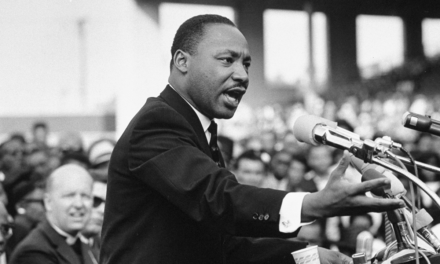
For the last several years I have been taking acting classes at a local studio where I live—motivated in part by a bucket-list type curiosity and in part by an endless desire to get rich quick and live on a yacht (can you blame me?). But what started as an itching curiosity has become increasingly a part of how I live and study the world. In my PhD studies I am starting to see how relevant and informative performance studies and the arts are to organizational topics like leadership. In this post I want to share some of my early thoughts on how acting—on the stage and in “real” life—can inform how we think about diversity and inclusion work.
Cultural competency—like all competencies—is a complex collection of both knowledge and action. And although knowledge about one’s own or other’s cultures is not always related to actions related to those cultures, they are often inextricably linked. But diversity and inclusion initiatives that treat cultural competency as merely a set of new cultural knowledge (i.e. Culture “x” believes “y”), leave us with a very weak competency that peaks at understanding and flounders at adapting and acting. It’s this latter part of cultural competency that is so vital for making diversity and inclusion work “come alive” in everyday life—and not left collecting dust on a PowerPoint or textbook. In fact, in the Intercultural Development Inventory (IDI), a tool used for measuring cultural competency, “adaptation” is the description of the final and ultimate goal of this cultural competency model. Although all of the orientations on the IDI continuum are action strategies based on ones level of cultural competence, it is the Adaptation orientation where action and “putting it all together” is the defining characteristic. So what does film or theater acting have to say about the “real” world lives of cultural competency action?
Like many novice acting students, when I sat in my first acting class I learned that all of my previous expectations and assumptions about acting were completely backwards. I thought that the job and skill of the actor was to convince the audience that what was happening on the stage was real through their taking on of wardrobes, accents, scripts and characters. But my acting coach spent week after week convincing us to forget the commonly held assumption that acting is faking. Instead, he challenged us to think about the similarities between acting on the stage and acting in our everyday lives. This was challenging for many reasons, but not least of which because if “acting is faking” then that means that our everyday “acting” with one another was faking too—and no one wants to admit to being superficial or faking in real life interaction. But if acting is simply using strategies to influence and engage with others, then the comparisons between acting and everyday life are endless and rich with insights. This type of acting happens in all of life’s seemingly mundane interactions. We “act” differently around family members than co-workers, with friends than bosses, with doctors and waitresses, with flight attendants and clergy, and on and on. All of the different cast members in our daily lives require that we adapt our actions and strategies in order to communicate all of the various emotions, desires, goals and objectives that make us tick. This doesn’t mean we are “faking” to manipulate others; it is just the natural way that we interact based on the roles and nature of the people with whom we come into contact.
When we add to the list of cast members in our daily lives all of the diversity dimensions that make us all unique and complex, the layers of strategies that we need in order to have healthy relationships also increases. On the other hand, if we do not adapt and learn about culturally competent strategies when dealing with culturally different others, we run the risk of isolating ourselves into networks just like ourselves, losing trust of differing others, or offending others with our ignorance and cultural in-competence. The good news is that human beings are learning beings. When we take seriously the importance of engaging with diverse others with authenticity and are open to learning from those different from us, we are naturally quite good at transforming, adapting, and shifting our behaviors. What was so refreshing about acting classes was it became a socially “free” place to practice different strategies to engage with others. But the classes also made me realize that like Shakespeare said, “all of life’s a stage and all of the actors in it” and therefore my daily life was an opportunity to adapt and act in ways that were more competent, healthy, inclusive, risky, and engaging with the diverse cast that made up my life.
I encourage you to think about opportunities you might have in your daily interactions to adapt and engage with those around you in more culturally competent and inclusive ways. Break a leg!


















